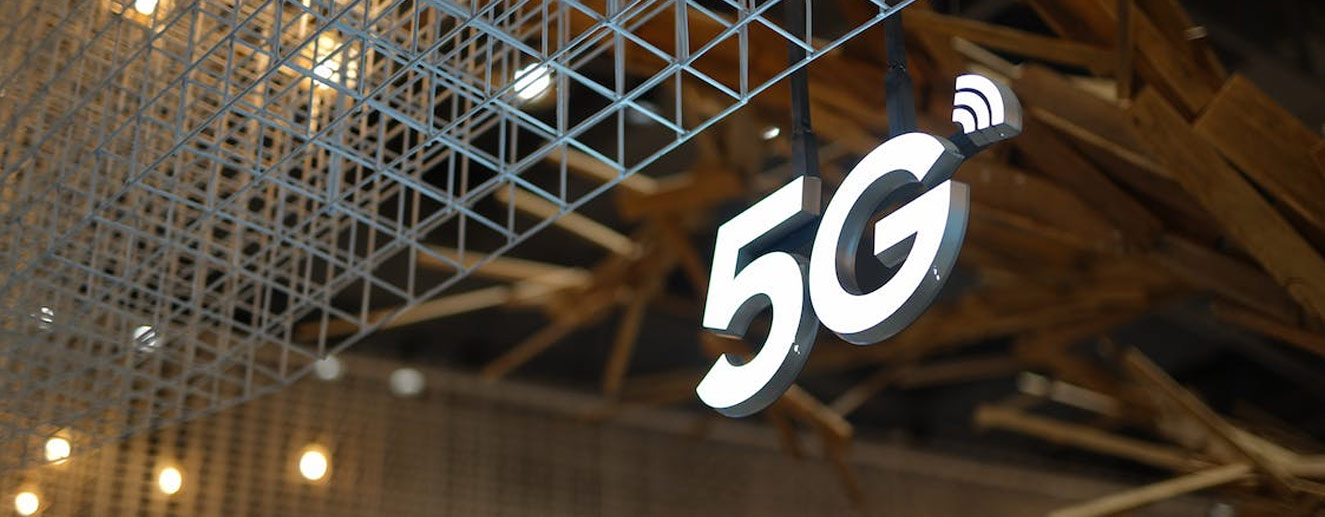Internet of Things or IoT is swiftly expanding and developing. A limiting factor for IoT has always been bandwidth. Thanks to advances in connectivity, IoT is all set to take off even further, driven in large part by 5G. This technology will increase cellular bandwidth by huge amounts, thus making it convenient for IoT to network large numbers of devices together.
5G and IoT
IoT is growing as the number of connected devices is set to increase from 700 million to 3.2 billion by 2023. Regardless of the issues arising due to chip shortages, the global IoT market shot up by 22% in 2021, to reach almost $158 billion! This number is expected to rise to $3.2 billion by 2023 and to $525 billion by 2027. While there are a number of factors contributing to this rise, one of the most important will be the development of 5G networks.
The 5G mobile service has begun to become widespread, as these networks help to boost performance and reliability of connected devices. 5G is set to drive digital transformation on a global scale, thereby giving rise to innovation and transforming industries. When companies switch to next-generation networks and sensors, their businesses will improve significantly. If we delve into the future prospects of 5G, it is expected to expand 10 times faster than current LTE networks, which is crucial for devices to communicate and exchange data quicker than ever before.
What is the impact of 5G on IoT implementation?
Needless to say, 5G has a considerable impact on the operation of IoT devices, whether it is for industrial, healthcare, or home applications. When these technologies are combined, they will virtually affect every component of IoT, either directly or indirectly. For sensors, it offers more bandwidth to transfer information rapidly and boost functionality. Here are the benefits:
- Faster transmission speeds than before – speeds of up to 20 Gbps will enable remote applications to access data, files, and programs even faster.
- More connected devices can communicate with each other and exchange information.
- Whether in smart homes or industrial facilities, these devices will be able to optimize processes, as well as security, by offering greater control.
- Using these technologies, companies can create new products, services, and business processes, or improve existing ones.
- Lower latency – with 5G networks, response times go down by 1/10 th of what they were with 4G, which allows for increased use of sensors for logistics management or remote transportation.
- Enables mass deployment for efficient and simpler devices thanks to its low cost, energy efficiency, and reliable coverage.
- Boosts data predictability and security by providing a fast response for rapid decision-making.
So how will 5G be a gamechanger for IoT?
Automation
IoT devices could be efficiently controlled and monitored remotely using 5G, without compromising performance. Businesses will be able to automate the vast majority of tasks that currently require human interaction thanks to seamless connectivity and increased network capacity. This will simplify processes, boost overall corporate productivity, and lower operating expenses.
AI integration to improve traffic control
Imagine how a smart city with thousands of cameras could direct people around traffic accidents, or inform people about empty parking zones. On top of that, autonomous vehicles will begin to take off too. 5G networking with IoT allows vehicles to communicate with one another, thus minimizing the chances of accidents, and creating far more efficient traffic patterns. Combining these technologies will reduce traffic jams, shorten commute times and save energy by decreasing the amount of time that vehicles need to idle at red lights or wait in line.
Vehicles could also monitor and record the condition of their oil or brakes, notifying the owner and connecting them directly to their chosen repair facility. Not only that, but self-driving cars could record and transmit data back to their manufacturers that could then be used to improve both the software and future designs.
Tele-health
Tele-health or tele-medicine became routine during the Covid-19 pandemic. However, it is subject to problems like blackouts and poor connectivity. These could be major issues in rural areas where no doctor resides nearby. 5G will increase internet speeds in remote areas and may allow for such things as specialist surgeons working via robots, in small rural clinics. It will also ensure that people with contagious diseases can be diagnosed remotely, without having to come into an office or hospital and spread it around.
Traditional tele-health services and capabilities will be greatly enhanced by 5G. Improved data capabilities and new cloud technologies can gather and analyze significant volumes of data, and fine-tune therapies. Using AI-assisted technology, doctors can perform examinations remotely on a computer or smartphone and provide reliable tele-medical diagnosis and treatments. Doctors will be able to track vital signs and offer appropriate support without the patient being there thanks to the 5G network’s faster connected gadgets. Wearable health monitors improve patient engagement and boost outcomes. They are expected to bring down hospital expenses, thus freeing up funds that could be better spent elsewhere.
Retail
Retail stores will totally change the way they offer customer support. The bandwidth and effort required by technicians to conduct training, oversee corporate operations, provide direction, and assist individuals utilizing virtual and augmented reality will be provided by 5G and IoT. Store employees can view and evaluate cyber-physical representations of their storefront in real time with a VR headset. Depending upon data-driven forecasting analytics, this can be used for assessing low stock, identifying sales opportunities, building shop displays, and providing lucrative offers and discounts. For a retail business to be constantly customer and sales-ready, IoT smart devices can also be used to control stock levels, discover shelf gaps, and locate missing items.
Integrated supply chain
Factories, warehouses, and transport hubs already make use of real-time monitoring and tracking, for inventory control and keeping tabs on parts, products, and equipment throughout the entire cycle. 5G will offer the ability to use a single system to track goods from the manufacturer to the end-user seamlessly. An alert is sent when the delivery is smoothly completed, while warnings are transmitted if packages are lost or misplaced. Integrating supply chains will bring down costs, allow for better customer service, and reduce the loss of products in transit. For any industry, it would allow for tracking of production bottlenecks, and improvement of processes.
Network slicing
One of the best aspects about 5G is its ability to implement virtual networks. Thus, it can create subnets that have varied traffic priorities. For instance, in a hospital, the network could be designed in a way to ensure that connection between a surgeon and a robot was prioritized over communications being used by patients. Emergency transmissions won’t be affected, even if the network reaches capacity.
Remote industrial maintenance
Thanks to mass mobile video streaming, repair and maintenance of complex machinery can be carried out remotely. It means savings in travel and personnel costs. These are placed in a central location, to assist less skilled personnel, robots or a combination of both.
Better IoT security
Important 5G communication will enable use cases where IoT-based devices and machines interact with each other. To make this happen, a very fast and reliable connection is a must, which can be made possible by 5G. It will generate a fast response from the cloud, with a decentralized approach and smaller local networks that boost security by choosing a private cloud.
The main benefits of 5G are higher speeds in transmissions, along with lower latency that allows greater capacity of remote execution, a larger number of connected devices and the possibility of implementing virtual networks. As of now, we are still in the first phase of 5G transition. When combined with IoT, 5G is all set to transform our lives completely over the next few years.

 Global
Global Australia
Australia India
India





Write a comment
Your email address will not be published. All fields are required